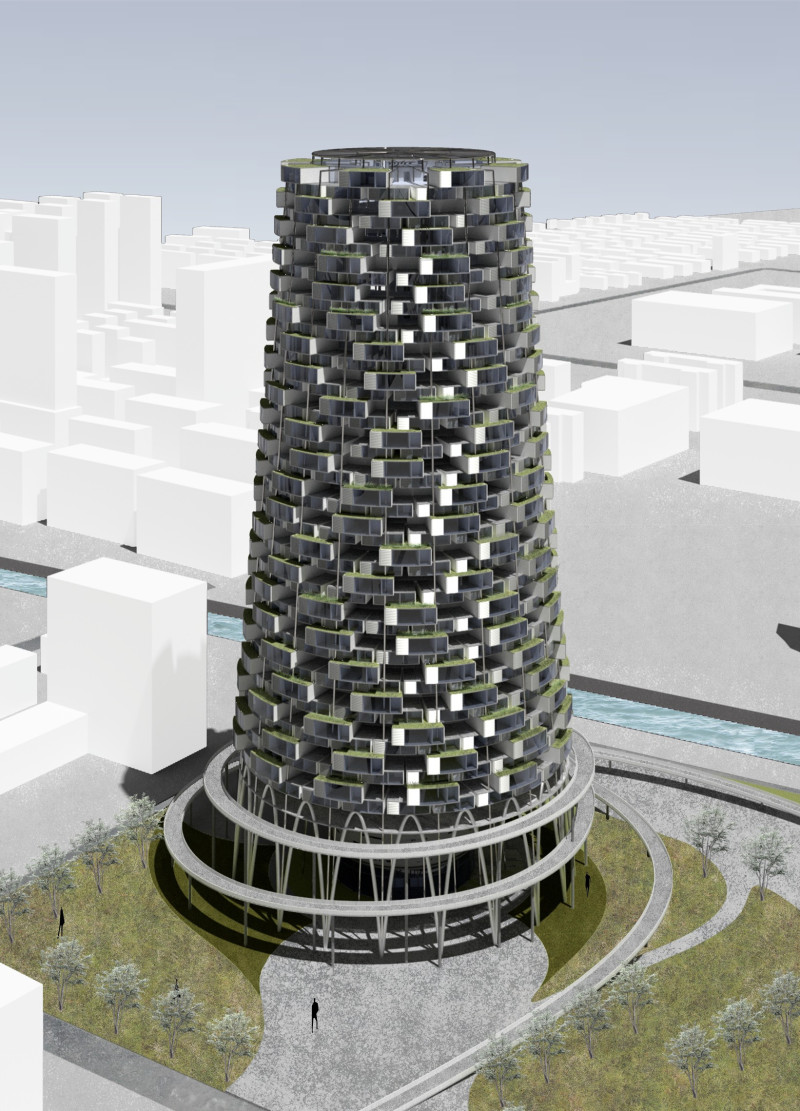5 key facts about this project
The design located in Hangzhou, Zhejiang Province, China, provides a thoughtful response to changing lifestyles and work patterns. With a focus on blending residential and professional spaces, the structure caters to the needs of internet celebrities. It offers an environment that allows individuals to thrive in both work and home life, directly reflecting recent shifts in society.
Design Approach
The layout organizes spaces in a way that promotes intimacy and connection. Users are naturally guided toward a central communal area where interaction can take place. The ground level includes bicycle paths that wrap around the building, making it easy for people to move around while also enhancing the visual appeal of the site.
Sustainability and Energy Generation
Central to the design is a commitment to sustainability. A dedicated bicycle lane at the building's base allows users to create electrical energy while cycling. This approach not only encourages exercise but also contributes to the building’s energy efficiency. The stored energy can be used when needed, combining healthy activity with practical functionality.
Structural Implementation
Supports are dispersed throughout the space, predominantly in the atrium and individual rooms. A parabolic support structure reinforces the base of the building, providing stability. This design choice also aids in natural ventilation, keeping the internal environment comfortable. Functionality and aesthetics are balanced, ensuring that each space serves its purpose well.
User-Centric Design
Behavioral patterns have been taken into account in the layout. Different areas are designed for activities such as work and relaxation, with specific time allocations for each. This careful planning enhances how spaces are used and improves daily life for residents.
Large windows invite in natural light, emphasizing the interiors and creating a sense of openness. Visual connections to the outside promote a smooth transition between indoor and outdoor spaces, making the environment feel more spacious and connected to nature.






















































